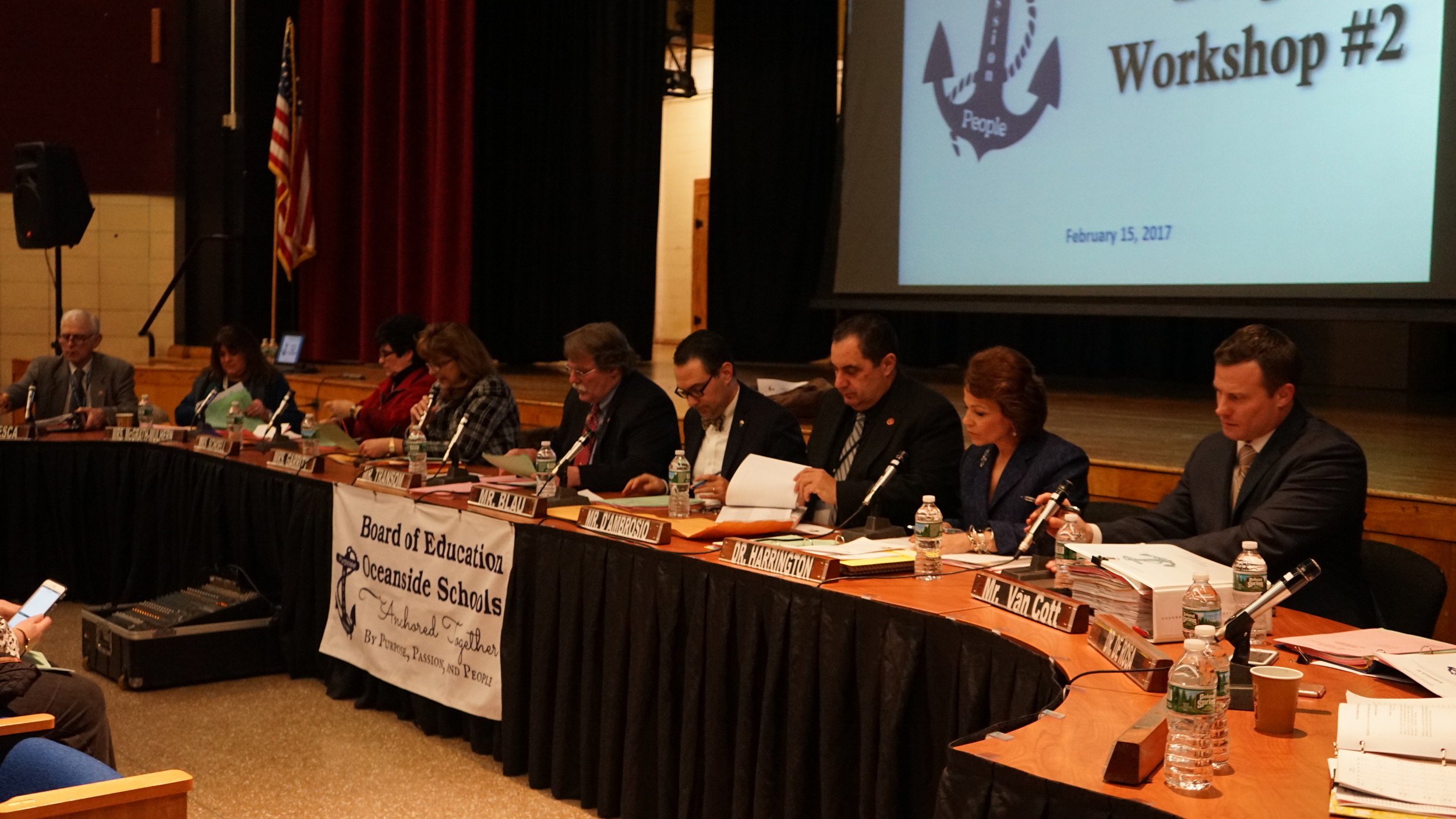Oceanside Board of Education introduces first half of 2017-18 budget
The Oceanside School District unveiled the first two parts of its preliminary budget for the 2017-18 school year at Board of Education meetings on Feb. 8 and 15, which covered the district’s anticipated administrative, capital, special education, sports and technology costs.
At the meetings, Chris Van Cott, assistant superintendent of business, discussed the major projected increases and decreases in expenses compared to the current year.
The largest increases included debt servicing for the district’s bonds — a difference of $740,000 — funds for purchasing five new student transportation vehicles and Board of Cooperative Educational Services (BOCES) costs.
According to Van Cott, the district plans to charge certain services such as information technology upgrades and paid software subscriptions through BOCES to make them eligible for state aid — an increase by more than $460,000 for the next school year.
Additionally, the district seeks to increase transfers to its capital fund in 2017-18 by $107,000 — bringing up total expenses going towards the fund to $502,000 — to repurpose facilities for a long-requested practice space for the high school’s thespian troupe.
A total of $400,000 of that $502,000 will be earmarked for the project, according to Van Cott. At the meeting, Schools Superintendent Dr. Phyllis Harrington said it will take two years to save up enough for the plan, but the district anticipates it would begin construction during the 2019-20 school year. She identified the Little Theatre in the high school as a possible space to be repurposed for the troupe.
Other notable increases included BOCES tuition – a difference of nearly $200,000 – in anticipation of an additional 21 BOCES students, as well as more than $181,000 in private school tuition for special-needs students and roughly $203,000 for special education instructor salaries.
An increase in $95,000 for consumable computer supplies such as printer toner cartridges, which, under new regulations, can no longer be financed as the district does with non-consumable computer supplies, is also expected.
Oceanside schools have also earmarked nearly $27,000 to purchase new football and lacrosse helmets. At the Feb. 15 meeting, Sandie Schoell, the school board’s vice president, raised concerns over the effectiveness of the helmets. Jeff Risener, the district’s athletics director, said that though the helmets being purchased were not the most expensive, they have the highest protection rating, according to research done by Virginia Tech University, which annually tests and rates football helmets.
The budget included lower expenses for electronic voting machine transportation, copy machine leases, postage expenses, salary costs for librarians and Department of Community Activities programs.
Additionally, the district plans to save nearly $167,000 next school year as it completes its transition from oil to natural gas heating, according to Van Cott.
Due to the state’s tax cap law, the percentage increase of the district’s budget that can be paid for by property taxes from one year to the next is limited to two percent, or the rate of inflation, whichever is lower. For the next school year, the rate of inflation is estimated to be 1.26 percent, according to Van Cott.
At the meeting, Dr. Harrington acknowledged that it is a challenge to balance a school budget under these restrictions.
“During the tax cap era, we have to be very diligent and mindful of every single penny we spend, and make very hard charges as to where that money goes,” she said.
The next parts of the budget will be unveiled at Board of Education meetings on March 8, March 22 and April 5, if needed. A budget hearing will be held on May 3, and the budget vote and school board election will be held on May 16.

 54.0°,
A Few Clouds
54.0°,
A Few Clouds 




